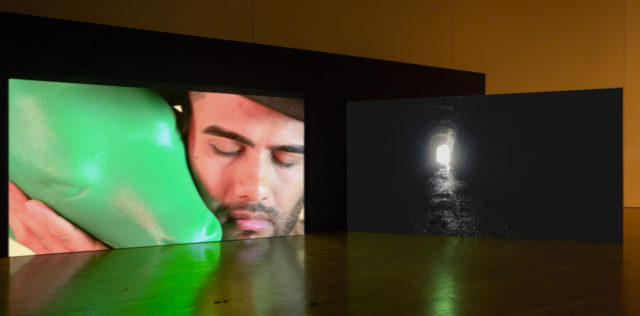
Kenneth Tam’s “Silent Spikes,” which opened at Madison Museum of Contemporary Art (MMoCA) on Nov. 5 and runs through Feb. 27, 2022, brings attention to the role of the Chinese immigrants who worked on the construction of the treacherous western portion of the transcontinental railroad while also exploring archetypal expectations of masculinity in relation to gender, economics, and race.
“Silent Spikes” was originally organized by the Queens Museum in New York by Assistant Curator Sophia Marisa Lucas.
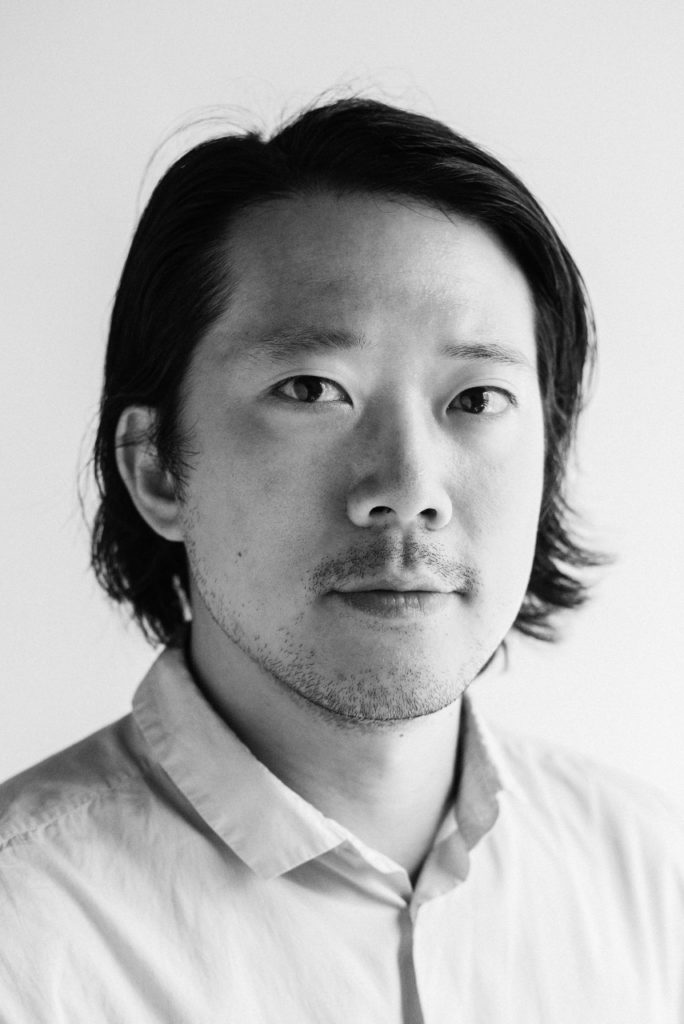
(Photo supplied)
“All of my work deals with the performance of masculinity, intimacy, inclusivity and using video to interrogate these ideas. I thought the Queens Museum would be an ideal venue to host this kind of project,” New York-born artist Tam tells Madison365. “It’s a museum that is located next to one of the larger Asian enclaves in New York. The programming is very much focused on speaking to the various communities that it serves within its immediate vicinity.”
“Silent Spikes” reflects upon the under-recognized connection between the histories of westward expansion and immigration in the U.S. According to a press release from MMOCA, the two-channel video incorporates visual and narrative references to the labor strike organized by Chinese transcontinental railroad workers in 1867, as well as the loosely scored activities of Tam’s participants, choreographed and free movements, and reflections that promote intimacy and connection to the self.
Tam works in video, sculpture, and photography, using the male body as a starting point for discussions about performance, physical intimacy, vulnerability, and private ritual. He started shooting “Silent Spikes” at the end of 2019 and had one shoot in February of 2020 right before the pandemic, which slowed down the production.
“The exhibition opened officially in February of 2021. It’s a project that takes existing elements of previous work and expands upon it,” Tam says. “I mostly work in video, but also sculpture and photography combine for these installations.
“It involves working with not only this group of Asian American men that I found that live in the NYC area, but also involves the site in Northern California where a labor strike occurred 150 years ago in one of the tunnels where the transcontinental railroad passes through,” he adds.
Chinese laborers made up a majority of the Central Pacific workforce that built out the transcontinental railroad east from California. On June 25, 1867, 2,000 Chinese railroad workers staged a strike to demand equal pay to white laborers, shorter workdays, and better conditions. Central Pacific broke the strike when they withheld food supplies to the Chinese who were isolated in the high mountains of the Sierras.
“Through researching during the pre-production of this project I discovered this labor strike. I thought it was remarkable that these men were somehow able to organize themselves unknown to the people of Central Pacific Railroad,” Tam says. “Thousands of men were able to coordinate this labor strike for a week. I think those kinds of resistance movements often get forgotten and I wanted to draw a link between that specific time and space and bring it into the present day.
“I thought it was important to use disparate events as a way to think about the history of Asian Americans in this country not as this isolated and disconnected event but as something that sits on a spectrum of a longer continuum,” he adds.
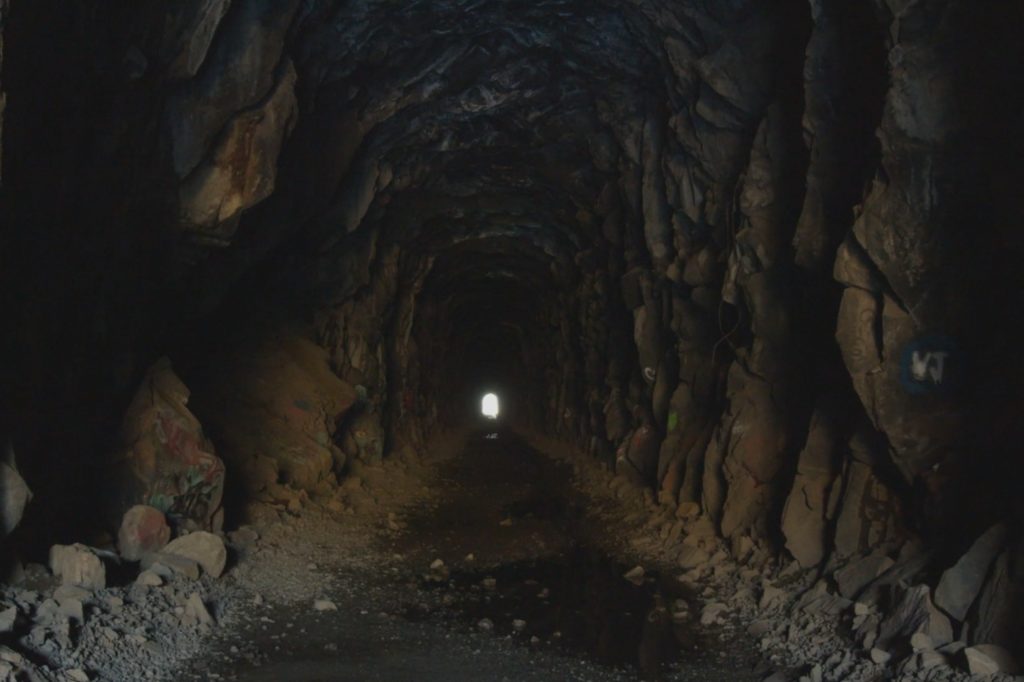
The tunnels are a recurring motif in “Silent Spikes.”
“The tunnels are quite amazing structures. They are massive,” Tam says. “And when you’re in them, they become even more impressive when you realize that they were excavated by hand without the use of any modern machinery. Just physical labor and dynamite.
“The more I look at the footage, the more I thought about the tunnel as a metaphor for linking up these disparate sites, physical spaces, but also moving across time between that period of the initial wave of Asian immigration into this country and present day,” he adds.
Tam says that there is actually no first-person history from the Chinese immigrant railroad workers.
“They didn’t leave any accounts behind. There’s a huge gap in the historical records, for sure,” he says. “So I took it upon myself to reinsert that story somehow with my voice and taking what information that was available about these men and trying to create a narrative that wasn’t just about how they were understood in terms of labor and capital, but also what it felt to be in there. All of my work is about the physical intimacy that develops between men and understanding the potentials of that. I wanted the narrative to be the emotional toll the space took on them.”
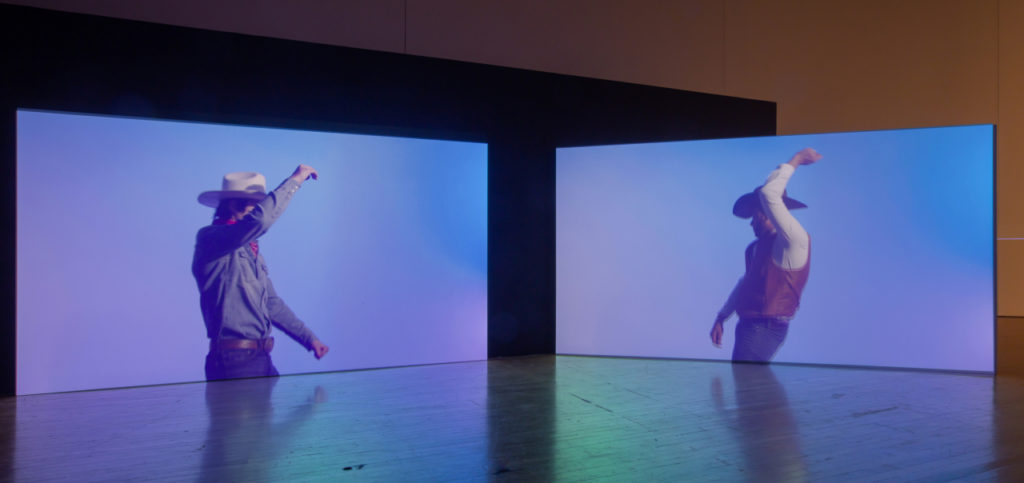
Courtesy Queens Museum, photo credit: Jason Mandella.
“Silent Spikes” also reimagines the iconic trope of the cowboy and American masculinity and juxtaposes this figure against the backdrop of little-known histories of immigrant labor in the American West.
“That’s definitely something I was playing with … this idea of the cowboy and how it stands for so many ideas of conformance and gender and also in a racialized way and seeing what happens when you have these Asian men inhabiting that as a costume and as an identity and how you can complicate that,” Tam says. “How can I reimagine that character through their performance of it?
“The project wasn’t necessarily about taking that identity for granted but it was about how can I play with it? How can I invest in different kinds of meanings into it … ones that perhaps privileged intimacy and vulnerability and physicality that we don’t necessarily associate with that cowboy figure — we think of him as stoic, emotionless, rugged.”
“Silent Spikes” comes to MMoCA after its recent presentation at the Institute of Contemporary Art in Los Angeles. The two-channel video will be on view in MMoCA’s newly expanded Imprint Gallery until Feb. 27, 2022.
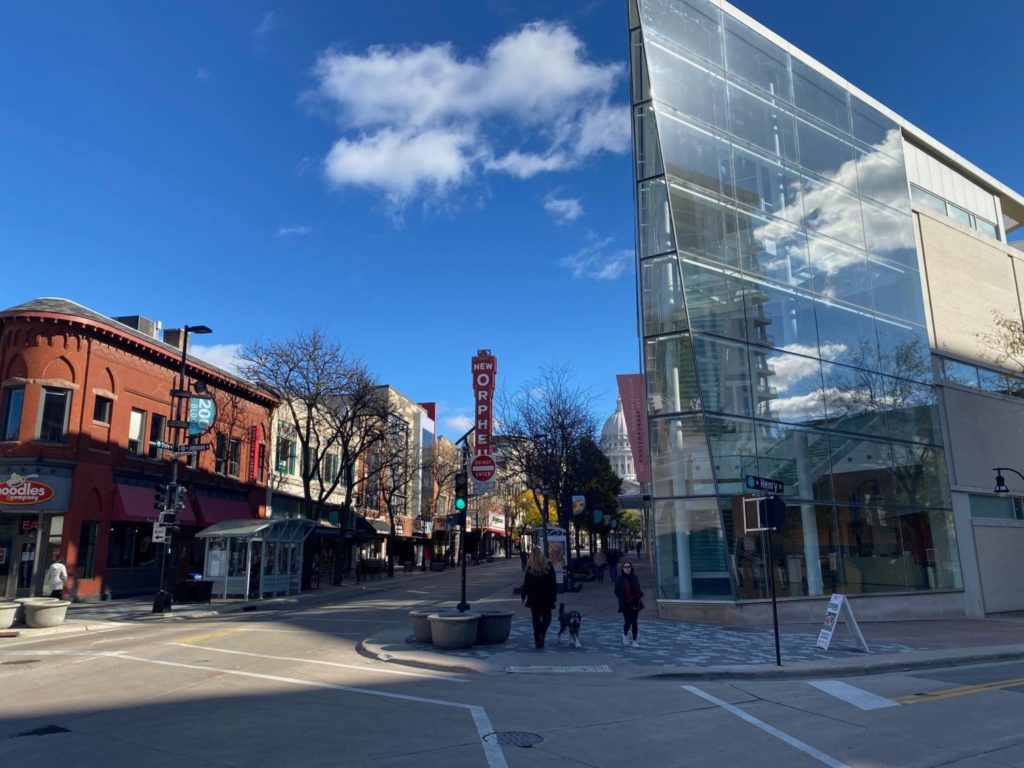
(Photo by David Dahmer)
“I hope people get that sense of history out of this. I think it deserves our attention. Aside from that, I hope people can reimagine the possibilities of gender performance and the ways we think about identity and how we think about history, in general,” Tam says. “I hope people can make some of these connections between the past and the present. Specifically, for immigrant communities where that history is never quite clear.
“Specifically, for Asian Americans. I want people to think about what these different waves of immigration can learn from one another,” he adds.



























